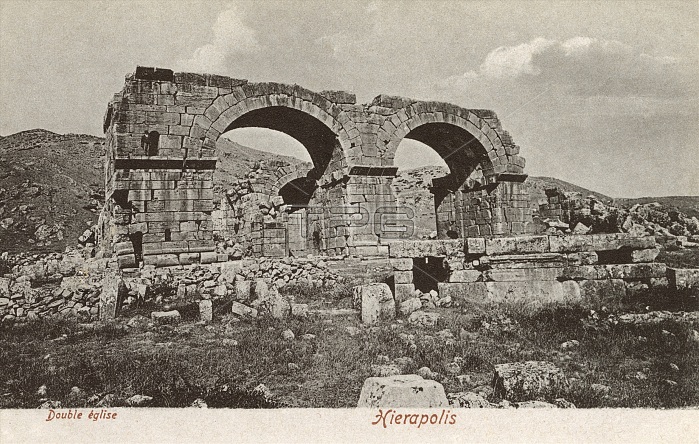
Entrance to the Temple (ruins) at Hierapolis. Pamukkale, meaning "cotton castle" in Turkish, is a natural site and attraction in south-western Turkey in the Denizli Province. Pamukkale is located in Turkey's Inner Aegean region, in the River Menderes valley, which enjoys a temperate climate over the greater part of the year. The ancient city of Hierapolis ('Holy City') was built on top of the white "castle" which is in total about 2700 meters long and 160m high. It can be seen from the hills on the opposite side of the valley in the town of Denizli, 20 km away. The tectonic movements that took place in the fault depression of the Menderes river basin triggered frequent earthquakes, and gave rise to the emergence of a number of very hot springs. The water from one of these springs, with its large mineral content ? chalk in particular ? created Pamukkale. The water contains large amounts of hydrogen carbonate and calcium, which leads to the precipitation of calcium bi-carbonate. Every second 250 litres of hot water arises from this spring, precipitating 2.20 grams of chalk per litre of water or 0.55 kilograms of chalk every second. This process has left thick white layers of limestone and travertine cascading down the mountain slope resembling a frozen waterfall. One type of these formations consists of crescent-shaped travertine terraces with a shallow layer of water, lying in a step-like arrangement down the upper one-third of the slope, with the steps ranging from 1m to 6 meters in height. The other form consists of stalactites, propping up and connecting these terraces. The ruins of the ancient city can be seen at the top of the slope.
| px | px | dpi | = | cm | x | cm | = | MB |
Details
Creative#:
TOP23806063
Source:
達志影像
Authorization Type:
RM
Release Information:
須由TPG 完整授權
Model Release:
No
Property Release:
No
Right to Privacy:
No
Same folder images:

 Loading
Loading